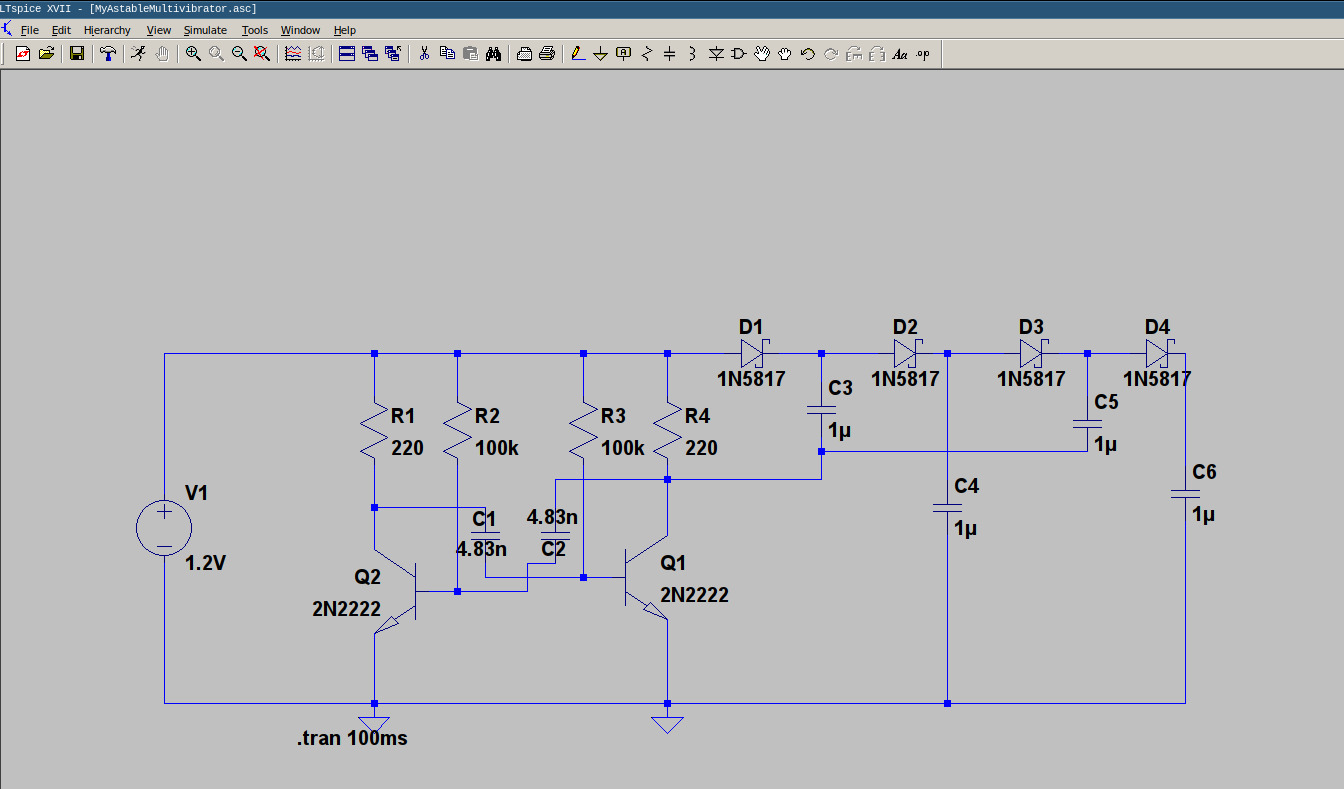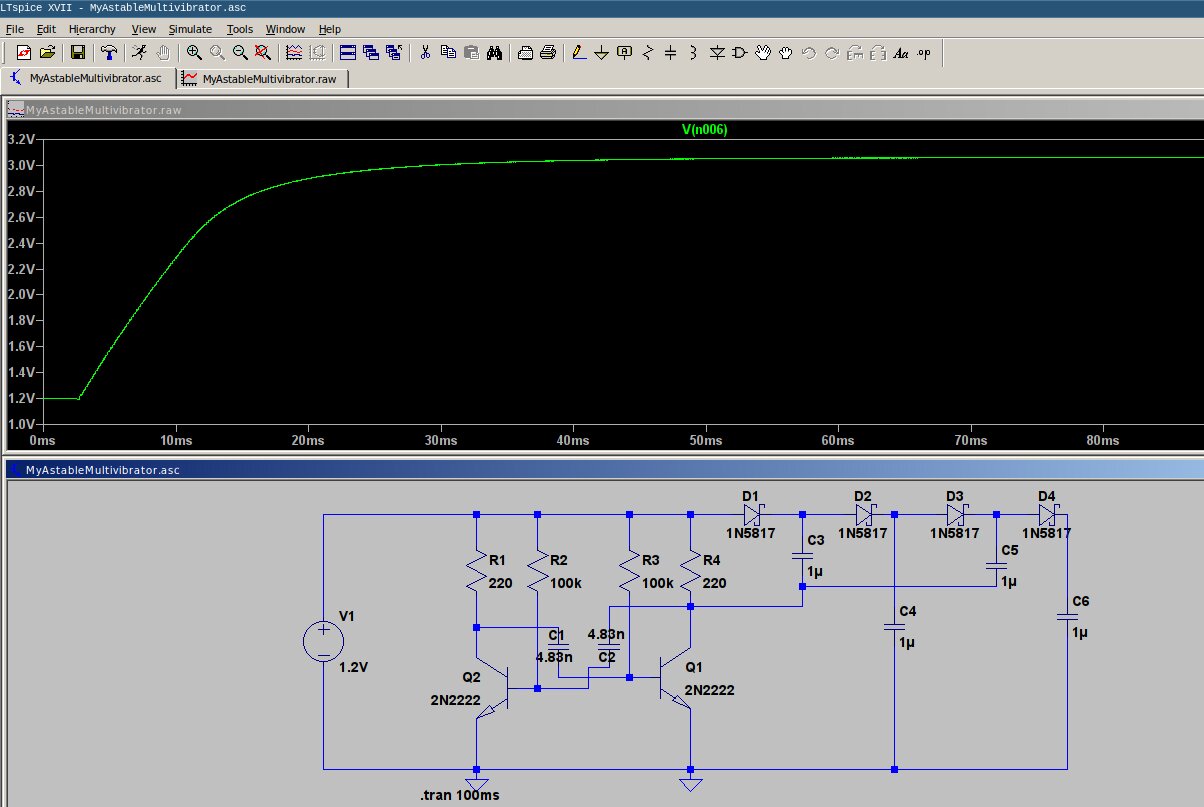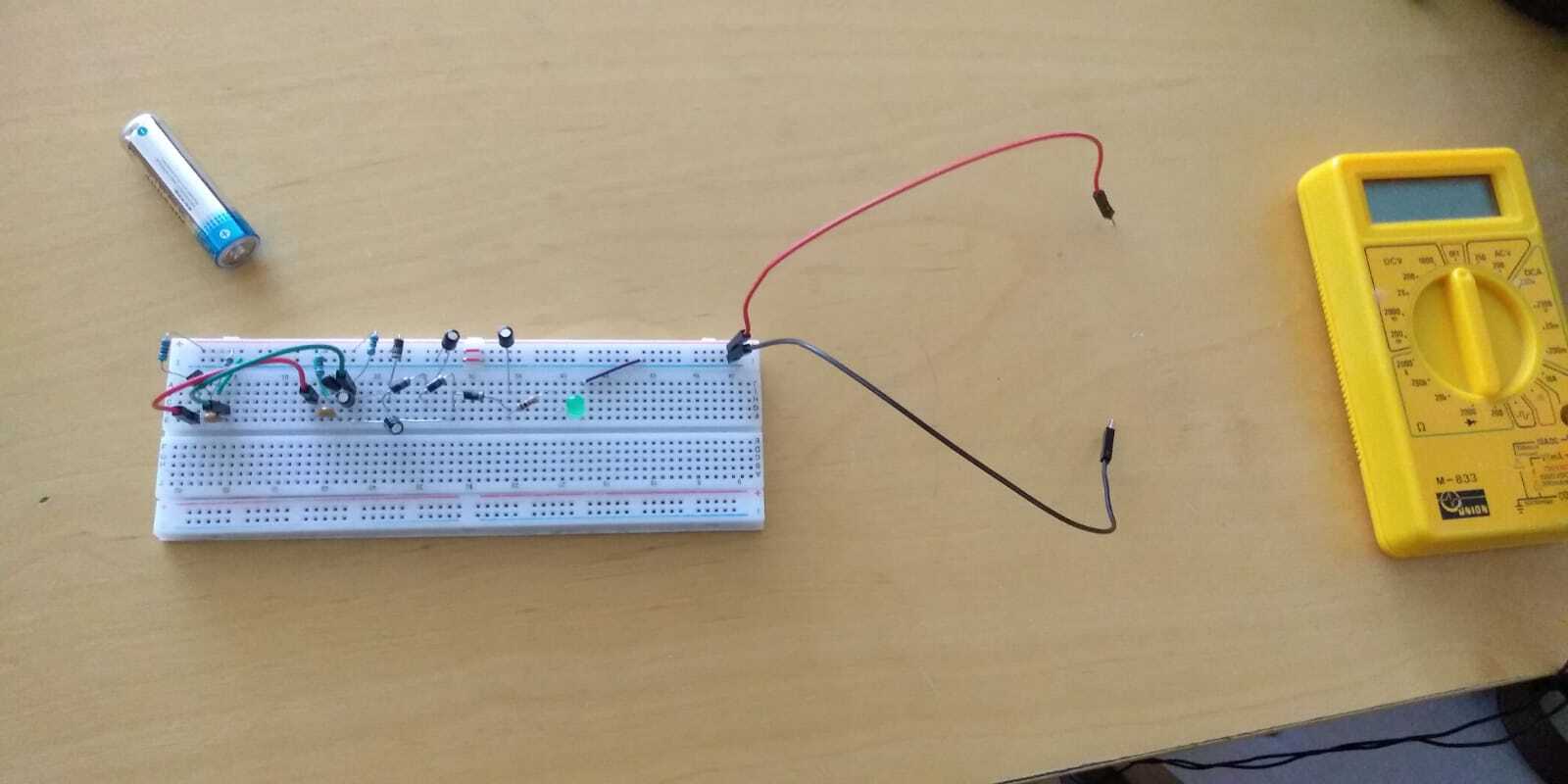(April 2020)
It was just after the 3rd week of complete isolation due to COVID-19, that I noticed a drained AA battery, sitting in a corner.
"Poor thing. Are you feeling as useless as I am?"
I took my multimeter, and measured it - yep, down to 0.8V. Far lower than the nominal 1.5V - no wonder it couldn't power the device.
"Bin material... You can't drive anything, not even an LED..."

No juice left. Or is there?
Wait a second. Voltage can be boosted, can't it? If so, it can drive an LED.
Looking at my drawers. Dust, cough, dust.
There!

Boost me up
I bought these boost converters, alongside many other electronics parts, when I immigrated. Don't judge - a man needs a hobby, and this is a really rewarding one. I've had tons of fun with electronics.
But after reading the specs...
"Input voltage: 2V-24V."
Damn.
Research, phase 1
Let's Google.
A couple of hours later, and I've read all about the Joule Thief.
In the video above, Clive Mitchell - affectionately known as "Big Clive" to his Youtube subscribers - builds his improved design, specifically made to "steal" the last ounce of energy out of a dead battery.
But his design depends on an inductor. I don't have any - nor do I have any ferrite core to wrap some wire around. I could, probably, still wing one; but somehow, I want to deviate.
Is there a way to boost voltage without an inductor?
Research, phase 2
Ah, there's also a family of designs, that are called charge pumps. These only depend on diodes and capacitors! I have both of these handy...
Dave Jones - another famous electronics Youtuber - shows how these work:
OK, this is becoming exciting.
All I need to do, is to create a clock, pulsing at a frequency of at least 100Hz - and arrange pairs of Schottky diodes and capacitors. The voltage will go up!
But... wait a second.
I can't power any of my microcontrollers with 0.8V. My Arduinos need at least 5V; even the pro mini versions need 3.3V, just like the ESP8266 and the STM32F1s that I have.
Argh. How can I create a pulse from 0.8V, without a microcontroller?
Down to basics
Well, one of the things I stumbled on, as I spent time on this hobby over the last 4 years, was the astable multivibrator; a design that uses only resistors, capacitors, and transistors, to create never-ending oscillations from an input voltage. As long as the voltage is high enough to turn a transistor on, this should work.
Well, 0.8V is larger than 0.65V. And I do have a box with transistors.
(heartbeat elevates)
Since I am a complete idiot in everything electronics related, my only salvation is to simulate first.
I launch LTSpice, and create this design:

Simulation with LTSpice
Clicking on Simulation/Run, touching the probe on the rightmost corner...

It works! Or at least, there's hope it will...
I don't believe it.
An electronics circuit that I... designed? Stole? Put the pieces together?
...well, it seems to work. In theory.
(heartbeat elevates)
Breadboard time
The moment of truth.
After all, simulations live in the dream world... In the world of perfect mathematical models.
This ain't that kind of world.
This is a world with crappy viruses.
(heartbeat at maximum)
Electronics... ASSEMBLE!

Drumroll...
It works!
Rest easy, poor battery - you are still useful :‑)
| Index | CV | Updated: Sat Aug 13 14:33:10 2022 |
The comments on this website require the use of JavaScript. Perhaps your browser isn't JavaScript capable; or the script is not being run for another reason. If you're interested in reading the comments or leaving a comment behind please try again with a different browser or from a different connection.

